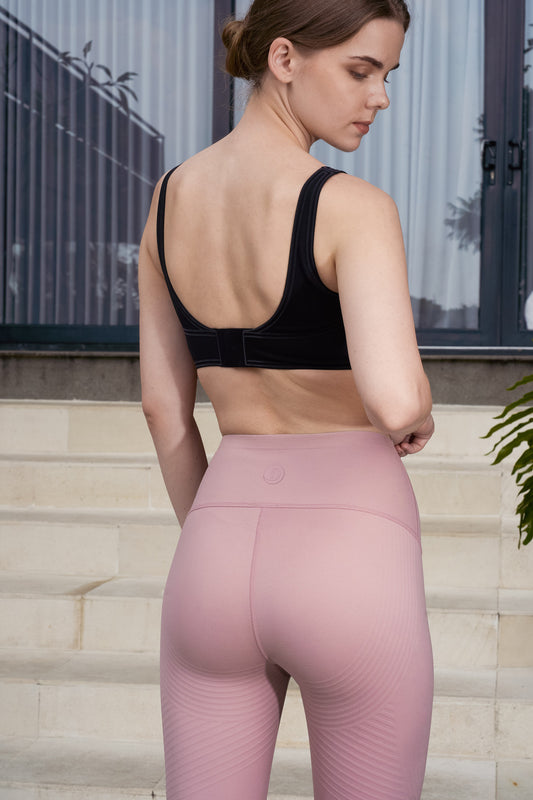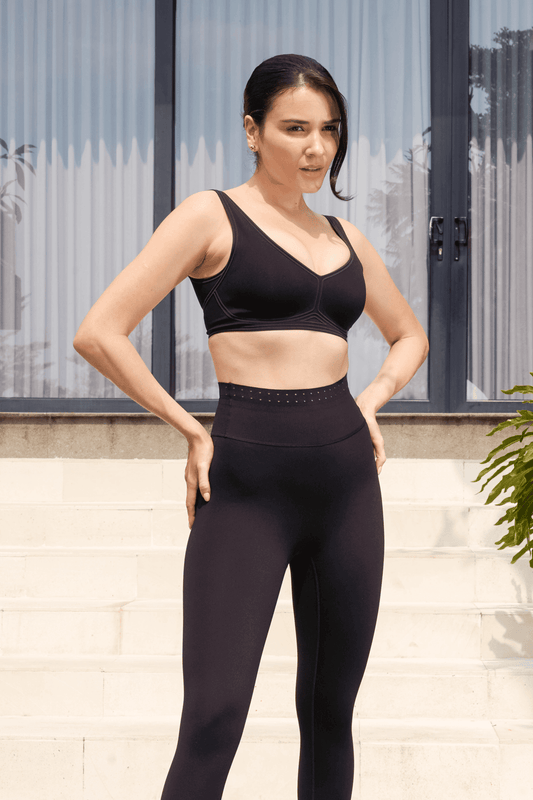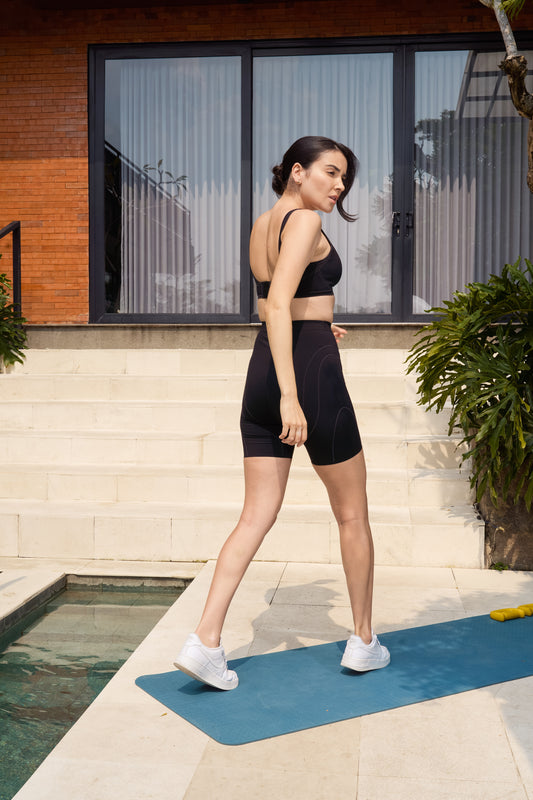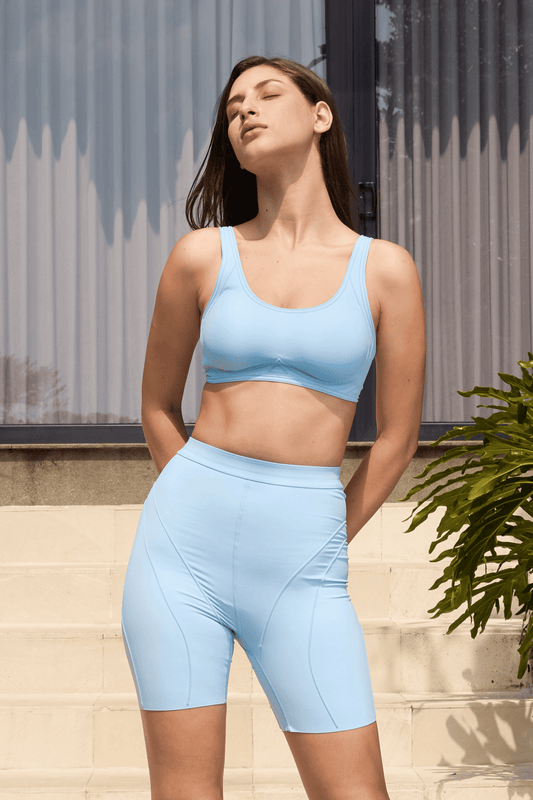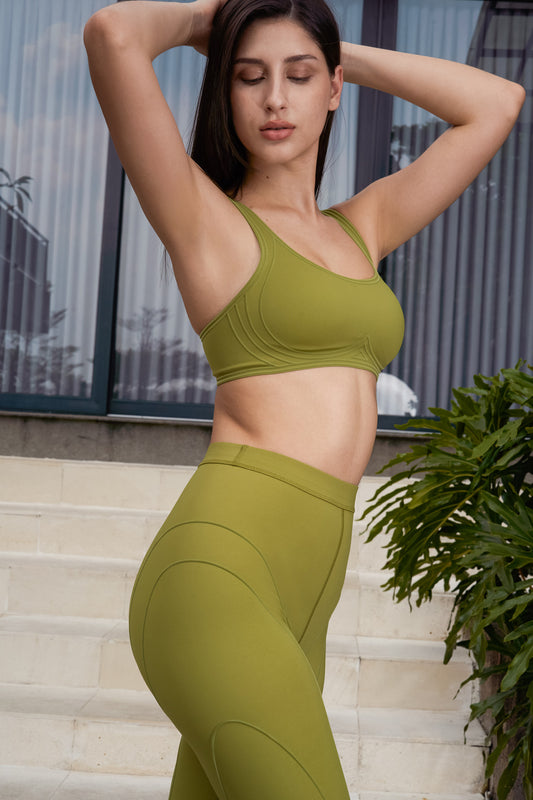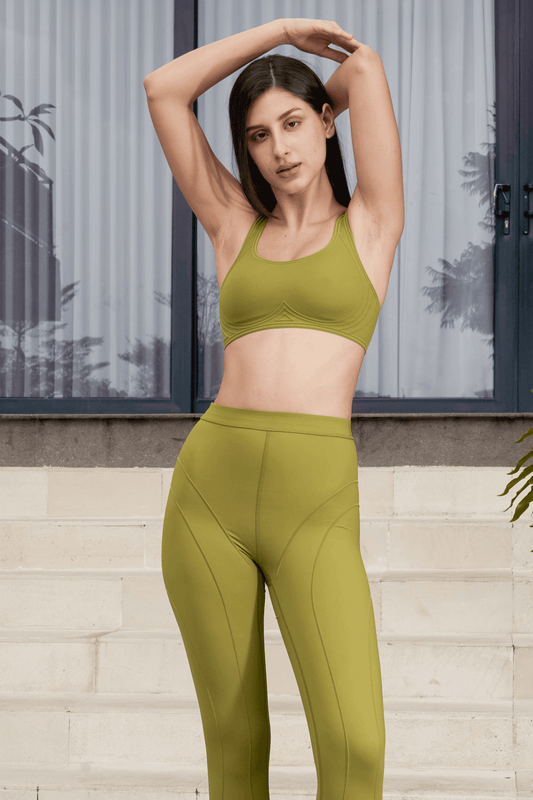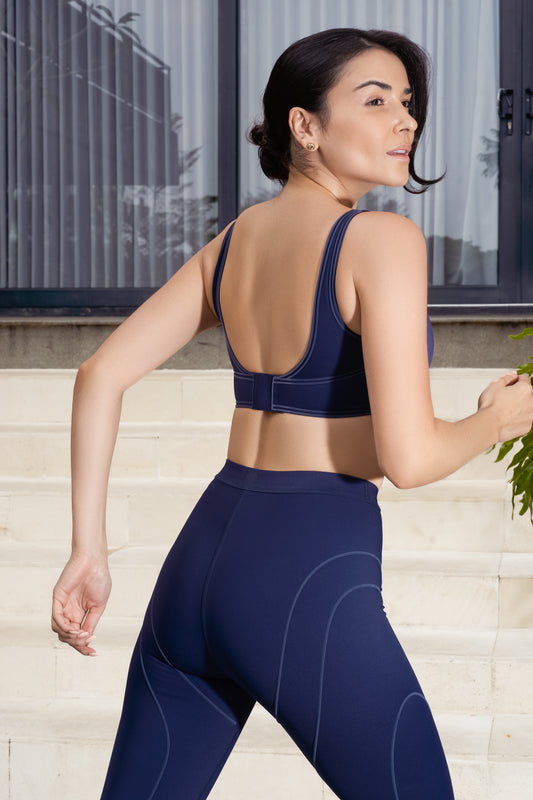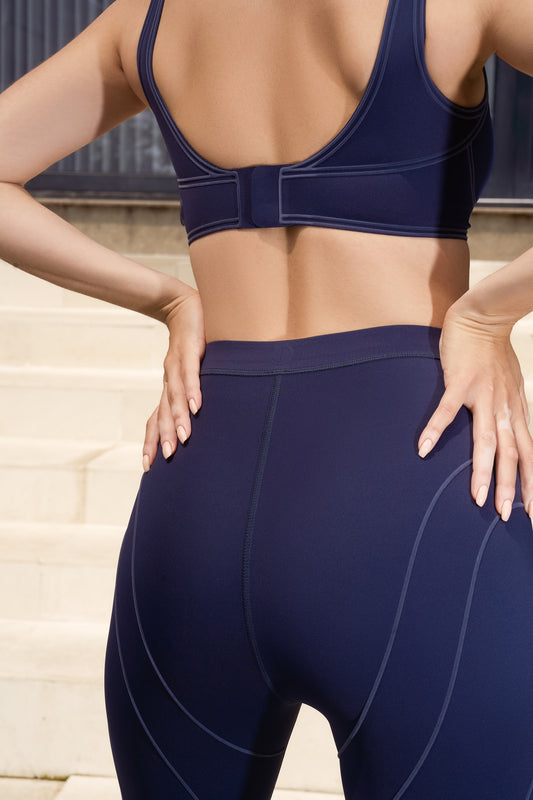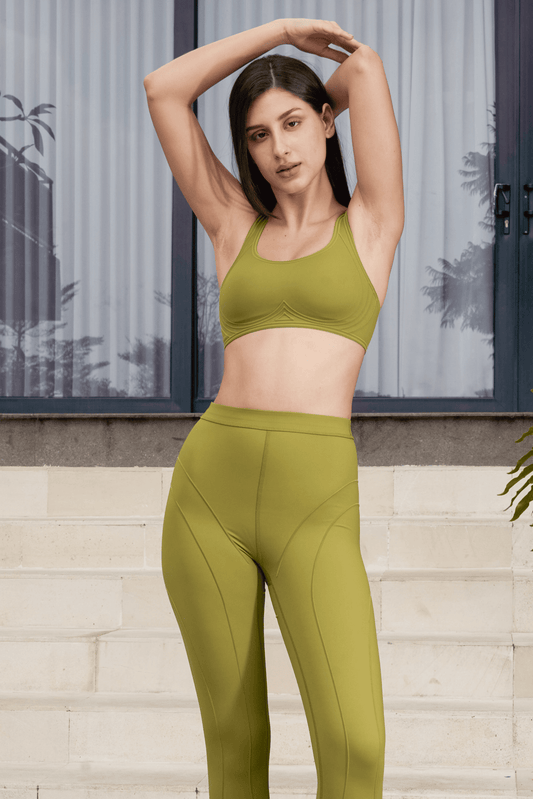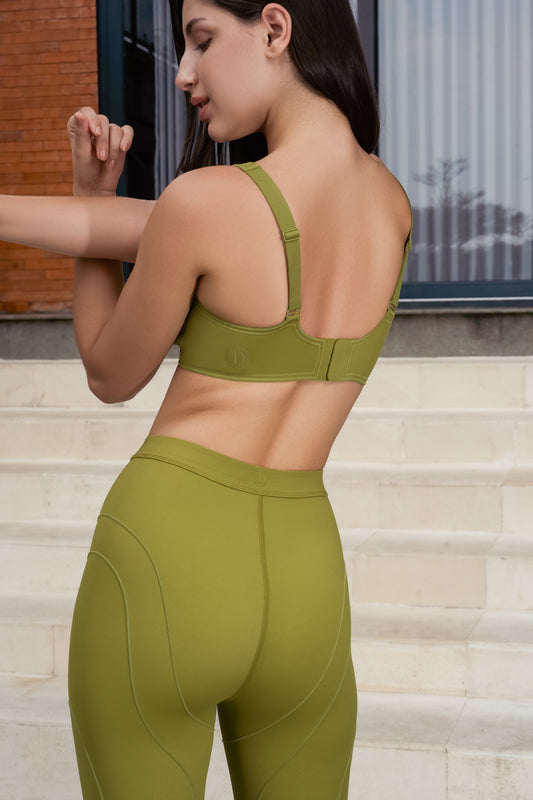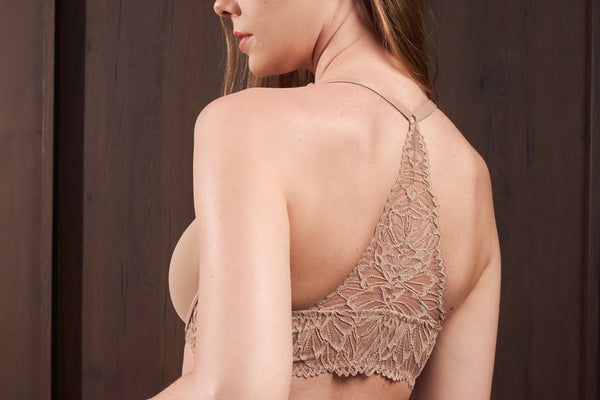Table of Content
Ever found a super cute bra on sale, but your exact size wasn’t available? Or maybe you’ve tried on bras in your usual size but they felt just a little off—either your bra is too tight in the band or the cups felt like they were doing their own thing? Well, there’s a little lingerie secret that could change your bra shopping life: bra sister size.
Yes, you heard it right! Bra sister sizes are a total game-changer when it comes to finding bras that fit well, even when your standard size isn’t available. In this article, we’ll spill all the details about what sister sizing means, how it works, how to read a sister size chart, and when to go up or down in sister sizes.
We’ll also talk about the limitations (because nothing is perfect, right?) and share some smart tips to help you find your new favorite bra size!
So, What Is a Bra Sister Size?
A bra sister size is basically an alternative bra size that has the same cup volume as your regular size but a different band size. Think of it like having three siblings: you’re the middle child (your regular size), and your older and younger siblings (your sister sizes) have different frames but still fill out the cup the same way you do.
Here’s a simple breakdown:
- Sister size up: larger band, smaller cup.
- Sister size down: smaller band, larger cup.
So, if your usual size is 34C, your sister sizes would be:
- Sister size up: 36B
- Sister size down: 32D
The cup volume stays the same, but the way it fits around your body changes based on the band.
How Does Bra Sister Sizing Work?
Let’s break this down. The cup size on a bra is relative to the band size.
For example:
- A 34C doesn’t have the same cup volume as a 36C.
- But a 34C does have the same cup volume as a 36B or a 32D.
That’s because the “C” in 34C is measured relative to a 34-inch band. When you go up to a 36-inch band, to keep the same cup volume, the letter changes to a B. And if you go down to 32 inches, the letter goes up to D.
It’s like a sliding scale!
Why Is Sister Sizing Important?
Sister sizing is your best friend when:
- Your favorite bra is sold out in your usual size.
- You’re in between sizes. Some days a 34C fits perfectly, but other days it feels tight? Try your sister size!
- Your body is changing. Weight fluctuations, muscle gain, pregnancy. Women’s bodies are dynamic, and sister sizing lets you adapt without a total overhaul.
- Trying different brands. Not all bras are made equal. Diana Intimates might fit you differently than another brand, so knowing your sister sizes helps you adjust quickly.
Bra Sister Size Chart: Diana Intimates Edition
Let’s use the Diana Intimates bra size chart to help you see what we’re talking about. Diana Intimates uses the common international system based on band sizes (30, 32, 34, 36, etc.) and cup sizes (A to F and beyond).
Here’s a simplified sample to get you started:
| Diana Intimates Size | Traditional Bra Sizes | Sister Size Down | Sister Size Up |
| S (Small) | 30B, 30C, 32A, 32B | 28C, 30A | 34A, 32C |
| M (Medium) | 32C, 34A, 34B, 36A | 32B, 30D | 36B, 34C |
| L (Large) | 34C, 36B, 36C, 38A | 34B, 32D | 38B, 36D |
| XL (X-Large) | 36D, 38B, 38C, 40A | 36C, 34DD | 40B, 38D |
| XXL (2X-Large) | 38D, 40B, 40C, 42A | 38C, 36DD | 42B, 40D |
Sister Size Up vs. Sister Size Down
Here’s a closer look at when to use each:
A. Sister Size Up (e.g., 34C → 36B)
Choose this when:
- The band feels too tight (especially after washing).
- You’re bloated or your weight has gone up a little.
- You want a bit more breathing room around your ribs.
B. Sister Size Down (e.g., 34C → 32D)
Choose this when:
- The band feels loose or rides up in the back.
- You want more support from the band.
- Your cups fit well, but you feel like your bra isn’t staying in place.
The Limitations of Sister Sizing
Okay, so before you go on a shopping spree, you have to know that sister sizing isn’t a magic wand. Here’s where it can fall short:
- Not always a perfect fit. Even if the cup volume is the same, the shape and distribution of your breasts might not work with a sister size bra.
- Strap positioning can change. With a larger or smaller band, the straps might sit wider or closer, which may feel uncomfortable.
- Different brands, different fits. Some brands (including Diana Intimates) follow standard sizing well, but some may still vary slightly.
Sister sizes are more of a helpful guide than a guarantee. Always try the bra on if you can!
Tips on Using Bra Sister Sizes Wisely (with Real-Life Examples!)
So, you’re ready to try out bra sister sizes? That’s awesome! Sister sizing is such a game-changer when you want better comfort, a better fit, or when your favorite bra is out of stock in your usual size. But you’ve got to do it smartly.
Here’s how to make sister sizing work for you like a pro:
1. Know Your Current, True Bra Size
Before you even begin exploring sister sizes, it’s important to measure your bra size properly. That means using a measuring tape to get two key measurements: right under your bust (to determine your band size) and around the fullest part of your bust (to determine your cup size).
Once you know your true size, you’ll be much better equipped to find a comfortable and flattering fit using sister sizing.
2. Only Go One Step at a Time
When using sister sizes, it’s important not to jump too far. Stick to one band size difference at a time, and adjust the cup size accordingly. Going from a 34C to a 38A, for instance, is not advisable, as this could leave you with a poor fit.
Instead, move gradually. If you’re a 34C and want to try a different size, your sister sizes would be 32D (band down, cup up) or 36B (band up, cup down). These small adjustments are more accurate and safer to try, especially if you’re testing a new brand or style for the first time.
3. Pay Attention to the Fit
Numbers and charts are helpful, but nothing beats listening to your own body. Always pay close attention to how a bra actually feels when you wear it. Is the band riding up in the back? That could mean the band is too big, and you may need to size down in the band and up in the cup.
Are the cups overflowing or digging into your chest? Then you might need to go up in the cup. On the other hand, if the cups are gaping or wrinkling, you may need to go down a cup size. Your comfort and how well the bra hugs your body are more important than just sticking to numbers.
4. Consider the Bra Style
Different bra types can fit and feel very differently—even in the same size. That’s why you need to consider the design and material of the bra when using sister sizing.
Everyday bras, like soft-cup or lightly lined T-shirt bras, tend to be more flexible and forgiving, making them great candidates for sister sizing. On the other hand, structured bras like push-ups, balconettes, or those with heavy padding may not adjust as well between sister sizes.
Sports bras, which are typically tighter for support, may also feel drastically different even if the label says it’s your size. So, when experimenting with sister sizes, start with simple, stretchy styles before moving on to more structured designs.
5. Try Both Directions
If your usual bra size doesn’t feel quite right and you’re unsure which sister size to try, it’s perfectly okay to test both directions. For example, if you wear a 34C and the band feels too tight, you can try going up to 36B for a little more breathing room.
If it feels too loose, try 32D for a snugger fit and better support. Sometimes, it takes a bit of trial and error to discover what works best for your unique shape. Every brand and bra style fits a little differently, so don’t be discouraged if the first alternative you try isn’t perfect. Trying both sister size directions can help you pinpoint your ideal fit.
Conclusion
Understanding the Bra Sister Size Chart truly opens up a world of options, helping you find that perfect, comfortable fit even if your “usual” size doesn’t feel quite right. By learning how sister sizing works, you can confidently explore better-fitting bras without frustration.
And when you’re ready to refresh your lingerie drawer, Diana Intimates is here for you! We offer a wide range of high-quality, premium undergarments for all body types—made with love, care, and elegant craftsmanship.
Every piece is carefully produced through a detailed, proper process with strict quality control to ensure comfort, beauty, and durability. Explore our bra collections right away!
FAQ
How do I measure myself to find my bra size?
Measure under your bust (for band size) and around the fullest part of your bust (for cup size). Then, subtract the two measurements to find your cup size. Diana Intimates has an online tool to help with this!
Is it okay to always wear my sister size instead of my regular size?
Yes, if it fits you better and feels comfortable. Your “regular” size is just a starting point—sister sizes give you more flexibility.
Do all bras come in sister sizes?
Technically, yes! But availability may vary. Diana Intimates, for example, offers a wide range of sizes that make sister sizing more accessible.



